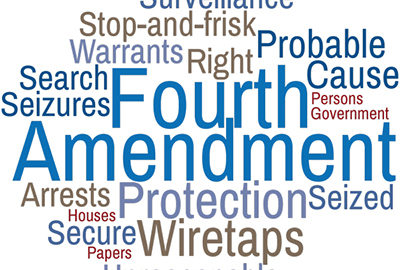United States v. Calvin Weaver
No. 18-1697-cr
Second Circuit Court of Appeals
Decided En Banc August 16, 2021
Issue:
Pat-Down Reasonable Under Fourth Amendment?
Whether an officer’s pat-down search of defendant Weaver for weapons was reasonable under the Fourth Amendment where the officer frisked Weaver during a traffic stop after observing him stare at an unmarked police car and try to conceal something in his pants.
Holding:
Pat-Down is Reasonable When Totality of Circumstances Provides Reasonable Suspicion
The Second Circuit held that Weaver’s pat-down was reasonable; it also reiterated 1) that an officer’s verbal directives to a suspect do not transform a stop into a search when they do not amount to physical trespass, 2) an officer’s subjective intent has no bearing on determining when the officer’s interaction with the suspect constitutes a search, and 3) in determining whether an officer has reasonable suspicion that a suspect is armed, courts must look to the totality of the circumstances confronting the officer.
Facts:
Calvin Weaver was frisked during a traffic stop in a neighborhood known for gun violence. The officer who frisked him saw Weaver staring at the unmarked police car before hitching up his pants as he got into a sedan. Officers later encountered the sedan and pulled it over for a traffic violation. As the officer approached the car he saw Weaver slouched in his seat, shifting and using both hands to push down on his pelvic area as if to conceal something. When ordered outside the sedan with his hands on the trunk, Weaver responded that “[he] don’t got nothing.” As Weaver stood at the back of the car he pressed his pelvis toward the car. During the pat-down, officers discovered that Weaver had a loaded semi-automatic pistol and baggies of cocaine hidden in his pants.
Weaver filed a motion to suppress the evidence obtained during what he claimed was an unconstitutional pat-down. The district court denied his motion, focusing on the totality of the circumstances facing the officer at the time of the pat-down. It reasoned that some of the facts, on their own, were insufficient to create reasonable suspicion for a frisk, but that all the facts, when considered together, established that the officer had a reasonable suspicion to believe that Weaver might be armed and dangerous, therefore justifying a pat-down.
Weaver appealed his conviction for being a felon in possession of a firearm, arguing that the district court erred in denying his motion to suppress the gun and drugs found in the search. In support, Weaver claimed that in assessing whether reasonable suspicion existed, the court is limited to analyzing his conduct before the officer ordered him out of the car. Weaver further contended that the officer’s order marked the moment the search began because Weaver reasonably thought he was being searched at that point, and because the officer subjectively intended to search him when he gave him the order. Weaver also argued that the facts known to the officers did not provide them with reasonable suspicion that he had a weapon, as required by the Fourth Amendment in light of Terry v. Ohio (392 U.S. 1 (1968)). A divided Second Circuit panel heard Weaver’s arguments and reversed the district court’s denial of his motion to suppress the firearm and drug evidence. The panel majority concluded that the officer did not have a reason to believe that Weaver was armed and dangerous, but that, “at most, the officers had reason to believe that Weaver possessed something illicit.”
Upon rehearing Weaver’s appeal en banc, the Second Circuit vacated the panel opinion, rejected Weaver’s novel legal contentions as adopted by the panel majority, and confirmed several fundamental principles of Fourth Amendment jurisprudence.
Analysis:
Totality of Circumstances
When considering a ruling on a motion to suppress evidence, the Second Circuit reviews the district court’s legal conclusions de novo, its findings of fact for clear error, and its decision on mixed questions of law and fact, including whether there was a reasonable suspicion to justify a frisk. Warrantless searches and seizures are “per se unreasonable under the Fourth Amendment—subject only to a few specifically established and well-delineated exceptions” (Katz v. United States, 389 U.S. 347, 357 (1967)). The Terry investigative stop and frisk is one such exception.
Terry Stop and Frisk
In Terry v. Ohio, the Supreme Court upheld a stop and frisk of two men who officers noticed “hover[ed] about a street corner for an extended period of time.” Worried the men were casing the store for a robbery, the officer stopped the men and asked for their names. When one of the men mumbled something in response, the officer grabbed and patted him down, finding a .38-calibre revolver in his coat pocket.
As to the constitutionality of the stop, the Court reasoned that the government’s general interest in effective crime prevention and detection can outweigh the minor intrusion imposed by a police stop for questioning. Accordingly, Terry establishes the rule that police may stop a person for investigative purposes when they have a “reasonable suspicion” that “a person they encounter was involved in or is wanted in connection with a completed felony,” even if that suspicion does not rise to the level required for probable cause.
Regarding the frisk, the Court reasoned that an officer must have a reasonable suspicion not only that criminal activity is afoot, but also that the person suspected is “armed and dangerous” (Terry, 392 U.S. at 23). The further line of inquiry recognizes that a frisk is a more intrusive invasion of a person’s security than a stop. The Supreme Court concluded with Terry that a frisk was nevertheless a “minor inconvenience and petty indignity” in light of the need for law enforcement officers to protect themselves and other prospective victims of violence. In other words, the Court recognized that the adherence to the probable cause standard for pat-downs could leave officers without the tools they need to do their jobs safely and respond to quickly evolving situations.
‘Reasonable Suspicion’ Standard
The reasonable suspicion standard requires only that an officer “be able to point to specific and articulable facts which, taken together with rational inferences from those facts, reasonably warrant that intrusion…” (Id. At 21). Reasonable suspicion requires less than the ‘fair probability’ of wrongdoing needed to support probable cause. In determining whether an officer has an “objective” basis for his conduct, the Court must “view the totality of the circumstances through the eyes of a reasonable and cautious officer on the scene, whose insights are necessarily guided by the officer’s experience and training” (United States v. Santillan, 902 F.3d 49, 56 (2d Cir. 2018). A “mosaic” of factors can contribute to a basis for reasonable suspicion, including, among other things, “the suspect’s behavior, the context of the stop, and the crime rate in the area” (Navarette v. California, 572 U.S. 393, 403 (2014)).
When Did the Search Begin?
An “officer’s action must be justified at its inception” (Kansas v. Glover, 140 S. Ct. 1183, 1188 (2020)). Thus, when reviewing the constitutionality of a frisk for weapons, the Court must examine the facts that preceded the frisk. In order to determine whether the facts preceding the search provided reasonable suspicion to conclude that Weaver was armed, the Court must first consider when the search began. It holds that the office began to search Weaver when he physically patted him down.
The Supreme Court has articulated two tests for determining whether a police officers’ conduct constitutes a “search” for purposes of the Fourth Amendment: whether the police officer “physically intrudes on a constitutionally protected area” and if not, whether the officer violates a person’s “reasonable expectation of privacy.”
‘Search’ Means Physical Trespass of Constitutionally Protected Area
Neither the officer’s verbal command to place Weaver in a position where a frisk might occur, nor his intent to conduct a frisk produced any invasion of a private and constitutionally protected area based on physical trespass or a reasonable expectation of privacy. The Supreme Court has held that as part of a lawful stop, an officer may take reasonable steps to ensure safety. He may order the driver and passengers out of the car, even if he does not have a reason to search the car or its occupants (See Pennsylvania v. Mimms, 434 U.S. 106, 111 n.6 (1977)). Depending on the circumstances, he may handcuff a suspect, secure him in the back of a patrol car, or order him to lie on the ground, move to another location, stand against a wall, or—as in this case—stand with his hands against the trunk of the car. Each of these measures may be appropriate to minimize safety risks, prevent a suspect’s flight, or secure a scene generally, and each can be challenged for being unreasonable or for transforming a Terry stop (requiring reasonable suspicion of criminal activity) into a de facto arrest (which requires probable cause). None of these measures, however, transforms a “seizure” into a “search.”
In short, the Second Circuit held that an officer’s verbal directives to a suspect do not transform a “stop” into a “search” unless the officer committed a physical trespass into a constitutionally protected area or otherwise violated the person’s reasonable expectation of privacy. Additionally, it is irrelevant whether the suspect reasonably believed that he was being searched, or what the officer’s subjective intentions were in placing the defendant in the search position. The search objectively commenced when the officer started physically patting down Weaver’s clothes.
For these reasons, the Second Circuit held that the officer had a particularized and objective basis for believing that Weaver might be armed and dangerous at the time he commenced the search, therefore the frisk was justified under the Fourth Amendment. The Second Circuit vacated the panel’s decision and affirmed the judgment of the district court.


